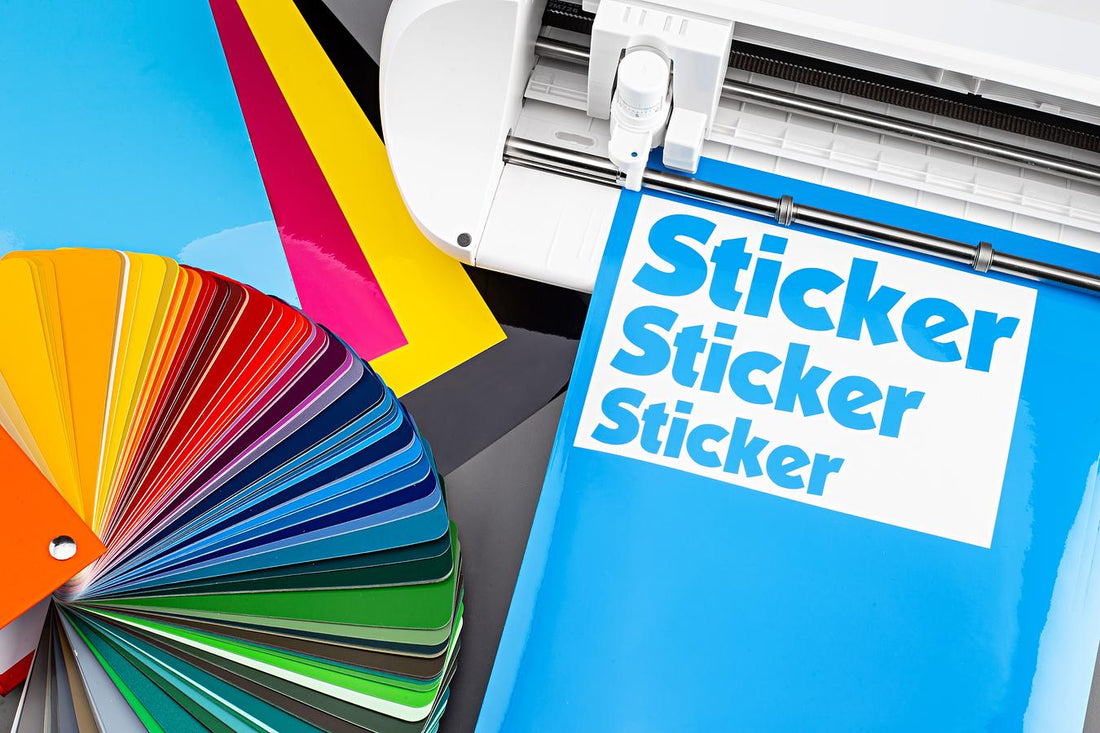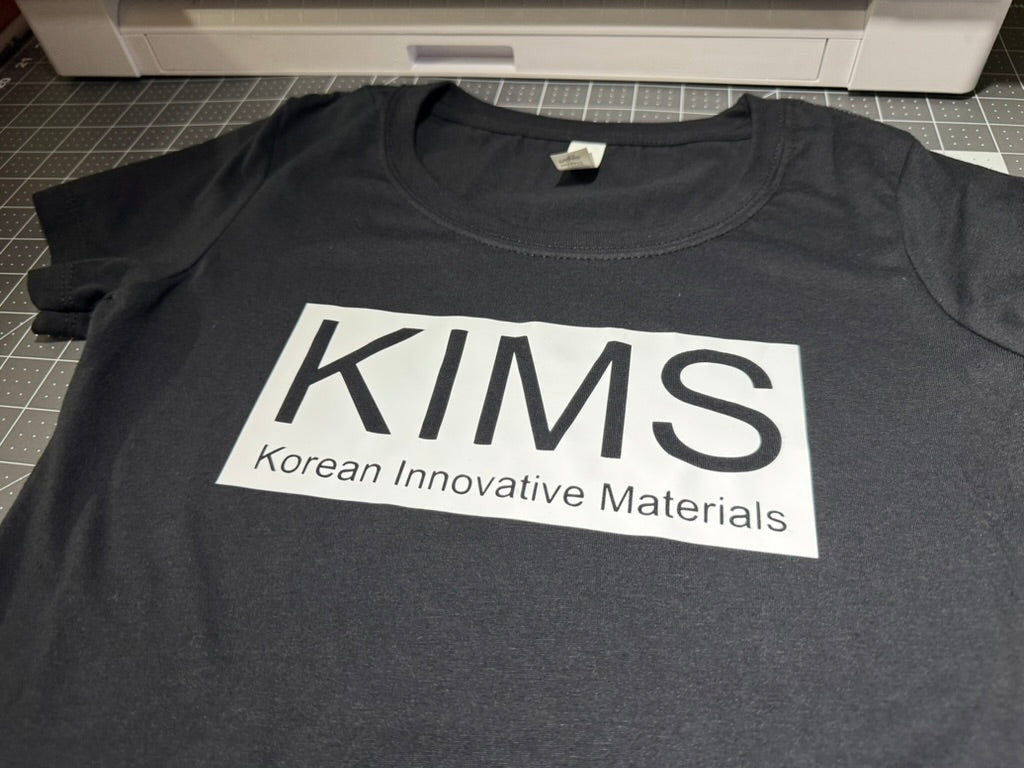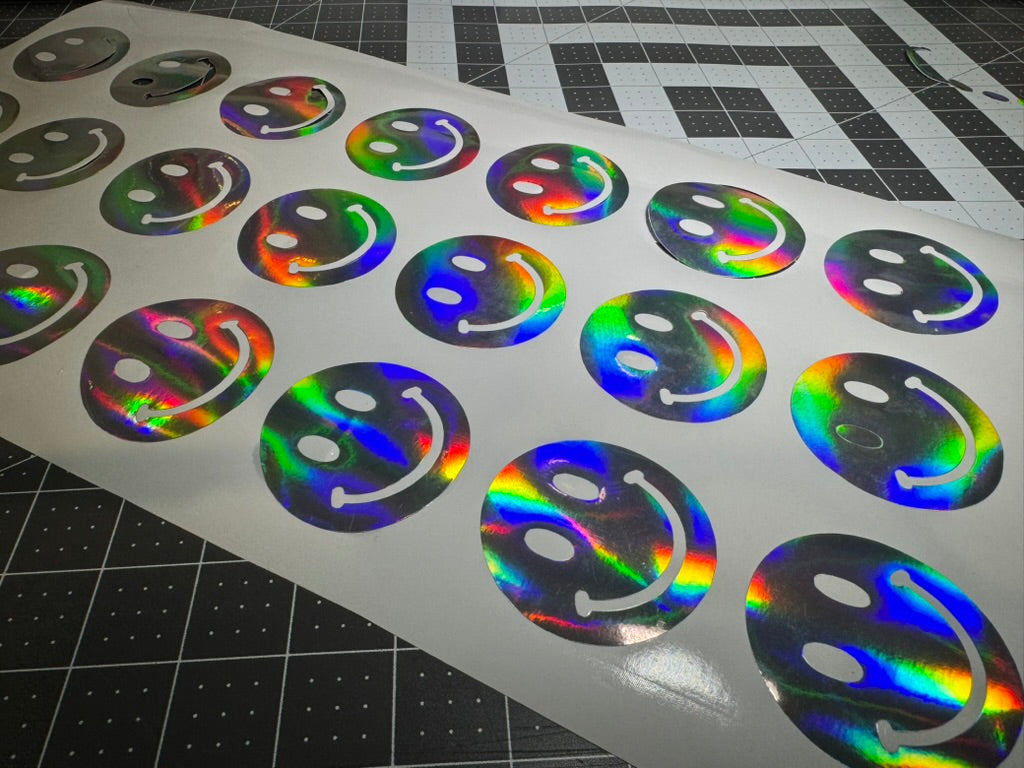Heat transfer vinyl (HTV) is a material used to apply designs onto fabrics using heat and pressure. It's widely used in custom apparel businesses to create logos, text, and graphics on t-shirts, uniforms, and other cloth-based products.
When production volume increases, purchasing HTV in small sheets or packs may not meet operational needs. Bulk heat transfer vinyl offers a format designed for higher output by supplying the material in larger quantities.
This article explains what bulk HTV is, how it's used, and what to expect when sourcing it for commercial or high-volume production.
What Is Bulk Heat Transfer Vinyl
Bulk heat transfer vinyl refers to HTV supplied in large quantities, typically in roll or sheet formats. Businesses that produce custom garments in volume commonly use this format to maintain consistent production.
Rolls are the most common bulk format, generally available in lengths of 5, 10, 25, or 50 yards. Standard widths typically measure 15 or 20 inches. Some suppliers also offer large flat sheets in bulk for specific production setups.
The material itself consists of three layers:
-
A carrier sheet that holds the design in place during application
-
A vinyl layer containing the color or special finish
-
A heat-activated adhesive that bonds the vinyl to the fabric
Bulk HTV works with commercial cutting machines and heat presses, making it suitable for environments that require consistent, repeatable output.
Why Buy Wholesale HTV Rolls
Purchasing heat transfer vinyl in bulk quantities offers significant advantages for businesses compared to buying smaller retail packages. The wholesale approach supports higher volume production while reducing per-unit costs.
|
Factor |
Retail HTV Purchase |
Wholesale HTV Purchase |
|---|---|---|
|
Cost per square foot |
Higher ($1.50–$3.00) |
Lower ($0.75–$1.25) |
|
Shipping efficiency |
Multiple shipments |
Single shipment |
|
Production continuity |
Potential for stockouts |
Consistent material availability |
|
Color/material consistency |
May vary between batches |
Consistent across large projects |
|
Minimum order requirements |
None/Low |
Higher (typically 5–25 yards per color) |
The cost savings from bulk purchasing typically range from 30-50% per square foot. This price difference becomes more significant as production volume increases. Consolidated shipping also reduces overall freight expenses compared to multiple smaller orders.
Using materials from the same production lot ensures color and finish consistency across large projects. This uniformity is particularly important when creating multiple items that need to match exactly, such as team uniforms or corporate apparel.
Maintaining a stock of bulk vinyl reduces emergency ordering and production delays. Many businesses find that the initial higher investment pays off through smoother operations and more reliable delivery timelines.
Types Of HTV Available In Bulk
The market offers various specialty heat transfer vinyl types in wholesale quantities. Each type creates different effects and works best for specific applications.
Glitter And Holographic
Glitter and holographic HTV contain reflective particles or prismatic patterns that create eye-catching visual effects. These specialty vinyls work well for fashion items, dance team uniforms, and promotional merchandise.
Due to their thickness and texture, these materials often require:
-
Slower cutting speeds for precise detail work
-
Careful weeding to preserve small elements
-
Specific heat press settings (typically higher temperatures)
Bulk pricing for these specialty materials usually follows roll length, with common sizes being 10 or 25 yards.
Reflective And Metallic
Reflective HTV contains light-returning particles that make designs visible in low-light conditions. Metallic HTV offers a smooth, mirror-like finish that resembles foil or chrome.
These materials serve different purposes:
-
Reflective vinyl works well for safety wear and athletic apparel
-
Metallic finishes add premium appeal to promotional items and fashion pieces
When working with these materials in bulk, proper heat press calibration becomes especially important. Most reflective and metallic HTVs require precise temperature and pressure settings to maintain their special effects.
Puff And Dimensional
Puff HTV expands when heated, creating a raised texture on the garment. This effect adds both visual and tactile interest to designs. Dimensional HTV includes various materials that produce 3D effects.
When ordering these specialty vinyls in bulk:
-
Storage conditions matter – extreme temperatures can affect performance
-
Consistent press settings ensure uniform results across large batches
-
Test samples help verify the dimensional effect before full production
These materials have gained popularity in streetwear and specialty markets where unique textures differentiate products.
Standard And Stretch
Standard matte HTV represents the most commonly purchased type for bulk production. It works on cotton, polyester, and blended fabrics with a classic flat finish. Stretch HTV contains added flexibility for performance wear and athletic apparel.
Both types come in extensive color selections from major manufacturers like Siser, Stahls', and others. The standard versions typically offer the most economical option for high-volume basic designs.
Key Steps For High Volume Application
Working efficiently with bulk heat transfer vinyl requires a systematic approach. Following these steps helps optimize production flow and maintain quality.
1. Preparing Artwork And Setting Up
Vector artwork with clean lines and minimal nodes cuts faster and more precisely. When preparing files for bulk production:
-
Gang multiple designs together to maximize material usage
-
Create cut files that follow the roll width to reduce waste
-
Set up cutting machines for continuous operation with roll feeders
Proper preparation reduces material waste and increases the number of designs you can cut from each roll.
2. Cutting And Weeding Efficiency
The cutting stage significantly impacts overall production speed. To optimize this process:
-
Use sharp blades and replace them regularly
-
Adjust cut settings specifically for each HTV type
-
Employ roll feeders and take-up systems for handling long vinyl rolls
-
Consider assigning dedicated staff for weeding to maintain production flow
For large orders, specialized weeding tools or automated systems can dramatically reduce the time spent removing excess vinyl.
3. Heat Press Tips For Bulk Runs
Consistent heat application ensures uniform results across all items. When pressing in volume:
-
Maintain calibrated temperature and pressure across all heat presses
-
Organize workflow to minimize press downtime between items
-
Use pre-cut alignment guides to speed up positioning
-
Consider multiple presses for high-volume operations
Pre-pressing garments for 2-3 seconds removes moisture and wrinkles, creating a better surface for vinyl adhesion.
4. Post-Press Quality Checks
Regular quality monitoring prevents large-scale waste. Effective quality control includes:
-
Sampling methods that check random items from each batch
-
Immediate testing for adhesion by stretching or rubbing the applied design
-
Visual inspection for incomplete transfers or press marks
-
Adjusting settings based on findings before continuing production
Catching issues early saves both materials and time that would otherwise be lost to rework.
Common Problems And How To Solve Them
Even experienced operators encounter challenges when working with bulk HTV. Understanding common issues and their solutions helps maintain production quality.
Poor Adhesion Or Peeling
When vinyl doesn't stick properly to the fabric, check these factors:
-
Temperature issues: Verify that your heat press reaches and maintains the correct temperature for your specific HTV type.
-
Pressure problems: Ensure even, adequate pressure across the entire design.
-
Timing concerns: Adjust pressing time based on the fabric thickness and HTV requirements.
-
Material compatibility: Confirm that the HTV works with your fabric content.
Always ensure the adhesive side of the HTV faces the garment during application.
Inconsistent Weeding Results
Difficult weeding slows production and can damage designs. To improve weeding consistency:
-
Blade condition: Replace dull blades that tear rather than cut cleanly.
-
Material tension: Adjust feed systems to maintain even tension across the vinyl.
-
Design complexity: Simplify extremely detailed elements where possible.
For intricate designs, weeding from the inside out helps preserve delicate elements and prevents accidental removal of design pieces.
Press Marks Or Fabric Discoloration
Heat and pressure can sometimes affect fabric appearance. To minimize unwanted marks:
-
Use protective covers: Teflon sheets or parchment paper between the press and garment reduce direct contact marks.
-
Adjust temperature: Lower the temperature if possible while still achieving proper adhesion.
-
Test first: Always test on sample fabrics before full production runs.
Different fabric types respond differently to heat, so adjusting settings for each material type helps prevent issues.
Choosing A Reliable Wholesale Supplier
Finding the right supplier for bulk heat transfer vinyl impacts both production quality and business operations. Several key factors determine supplier reliability.
Material quality consistency: Look for suppliers who maintain consistent color, thickness, and performance between batches. This consistency ensures that your production results remain uniform over time.
Shipping reliability: Fast, trackable shipping helps maintain production schedules. Suppliers with in-house logistics or established shipping partnerships typically provide more predictable delivery timelines.
Minimum order quantities: Consider how supplier MOQs align with your production volume and storage capacity. Most wholesale suppliers require minimum purchases of 5-25 yards per color.
Customer support: Technical assistance and responsive service become particularly valuable when troubleshooting new materials or applications. Suppliers offering application guides and direct support provide added value.
Warranty policies: Clear quality guarantees and return policies protect your investment. Look for suppliers who stand behind their products with reasonable warranty terms.
Moving Forward With Bulk HTV
Purchasing heat transfer vinyl in wholesale quantities delivers cost savings, production efficiency, and consistent quality for businesses. The initial investment in bulk materials typically pays off through reduced per-unit costs and more streamlined operations.
Working with a reliable vinyl supplier ensures you have the right materials for every project, reducing downtime and improving finished product quality. As your production volume grows, the benefits of bulk purchasing become increasingly significant.
KIMS Direct offers premium bulk heat transfer vinyl with consistent quality, fast nationwide shipping, and exceptional customer support. Their materials are engineered for production efficiency, featuring easier weeding and application—ideal for high-volume operations.
Shop our vinyl rolls and heat transfer materials for your next bulk project at KIMS Direct.
FAQs About Bulk Heat Transfer Vinyl
What is the minimum order quantity for bulk heat transfer vinyl?
Minimum order quantities typically range from 5 to 25 yards per color, depending on the supplier and material type.
How much can businesses save by purchasing HTV in bulk?
Businesses usually save 30–50% compared to retail pricing when buying wholesale HTV rolls.
How should bulk heat transfer vinyl rolls be stored?
Store HTV rolls in a cool, dry place away from direct sunlight to maintain adhesive quality and prevent warping.
Can different types of HTV be used together in bulk production?
Yes, multiple HTV types can be layered or combined, but always test compatibility and press settings before full production.
What equipment is needed for handling bulk HTV efficiently?
Large-format cutters, roll feeders, take-up systems, and commercial heat presses are recommended for efficient bulk HTV production.







